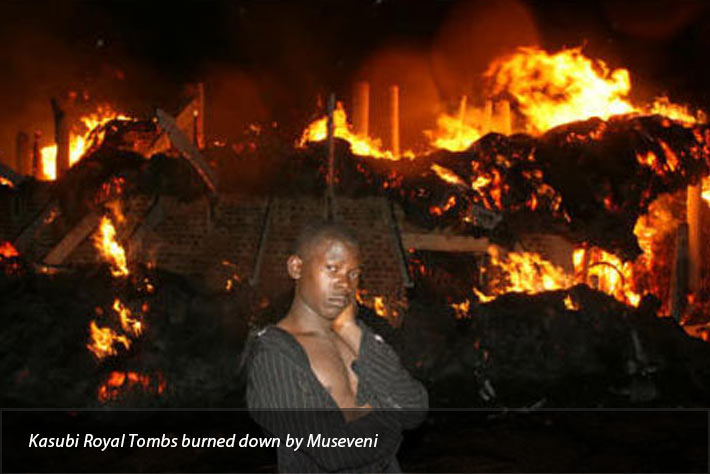A brief on the Kasubi Tombs (known in Buganda as a amasiro)
The Tombs of Buganda Kings at Kasubi constitute a site embracing almost 30 ha of hillside within Kampala district. Most of the site is agricultural, farmed by traditional methods. At its core on the hilltop is the former palace of the Kabakas of Buganda, built in 1882 and converted into the royal burial ground in 1884. Four royal tombs now lie within the Muzibu Azaala Mpanga, the main building, which is circular and surmounted by a dome. It is a major example of an architectural achievement in organic materials, principally wood, thatch, reed, wattle and daub. The site’s main significance lies, however,in its intangible values of belief, spirituality, continuity and identity.
History & Culture
The first Kabaka to be buried at Kasubi was Muteesa I, the 35th King of Buganda. The dates of the reigns of the Kabakas are only precisely known from Ssekabaka Suuna II, who ruled from 1836 to 1856.
The Baganda belong to the Bantu speaking people and date their political civilization back to the 13th century A.D. According to oral traditions, the first Kabaka of Buganda was Kintu. He is said to have come with his wife Nambi, whose hand he won by performing heroic deeds at the command of her father Ggulu, the god of the sky.
The Kabakas at Kasubi
Four Kabakas (Bassekabaka) are buried at Kasubi tombs, namely:
Muteesa I (1835-1884)
Basamula Mwanga II (1867-1903)
Daudi Chwa II (1896-1939)
Fredrick Walugembe Muteesa II (1924-1969)









No comment